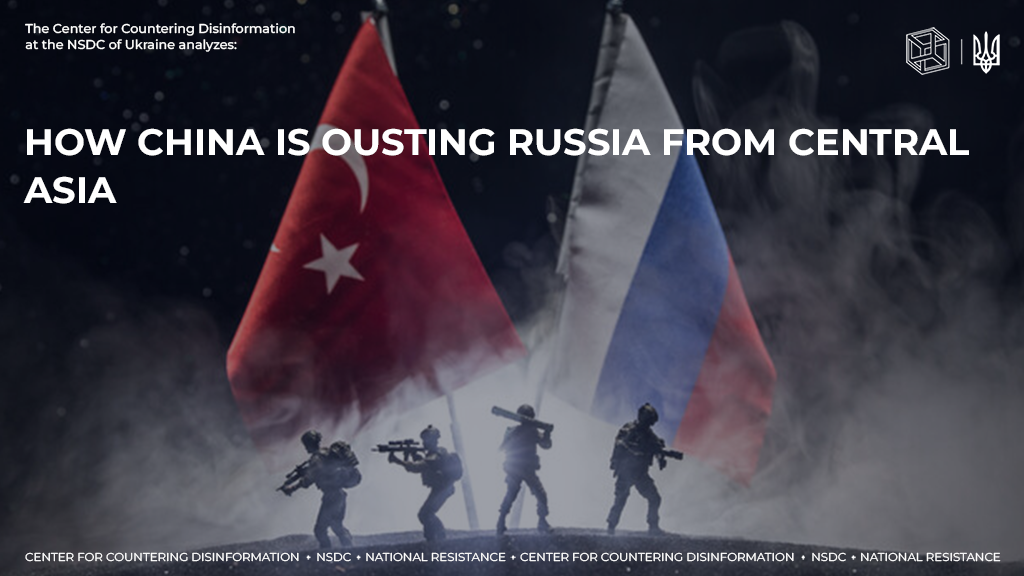❗️ Central Asia has recently become a region that attracts the attention of global players more than ever. Although China, as an Asian country, has always tended to develop and deepen its relations with the states of the region, recently not only economic, but also military cooperation has come to the fore. Such moves increase China’s military influence in the region and intensify the rivalry between Beijing and moscow for control of the region.
☝️ In recent years, there has been an increase in China’s arms exports to the countries of the region and efforts to develop military infrastructure. Over the past 5 years, China has provided 18% of the weapons needs of the Central Asian region. This is especially evident in Tajikistan, which, due to its common border (the Wakhan Corridor) with Afghanistan, makes the country an important component of China’s security on its western border. Every two years, joint military exercises with the Chinese armed forces take place in Tajikistan, and military equipment is systematically supplied. Moreover, since 2017 Beijing is trying to place a military base in Tajikistan and is ready to pay $8.5 million for its construction. The strengthening of Tajikistan’s military ties with China is of great concern to russia, because the country is home to the largest russian military base abroad.
❓ What factors led to this development of the situation in Central Asia?
🔸 First of all, the change in the political and economic course of the countries of the Asian region was influenced by the war waged by russia against Ukraine, which led to the trend of increasing poverty in the Central Asian republics. As indicated in the report of the International Monetary Fund, hostilities in Ukraine led to a reduction in the volume of currency transfers from russia to the countries of Central Asia (accounting for 10%-30% of GDP in Uzbekistan, Armenia, Georgia, Kyrgyzstan and Tajikistan). Due to military spending and international sanctions, the russian GDP continues to decrease, so the amount of remittances to the countries of Central Asia will also decrease. First of all, Kyrgyzstan and Tajikistan will be affected, as they are the most dependent on money transfers from russia. Due to these factors, a jump in food prices is expected in the post-Soviet Asian countries next year, the costs of which are 60-70% of the income of most of the population in Azerbaijan, Kyrgyzstan and Tajikistan. Of course, the leaders of these countries count less and less on russia’s help and are looking for a way out of the difficult situation in search of a more reliable partner, which China turned out to be.
🔸 Secondly, due to the russia-Ukraine war, the process of turning Europe towards Central Asia has noticeably accelerated. As the head of the EU foreign policy department J. Borrell noted, the EU needs to use the enormous potential of Central Asia, «from the supply of critically important raw materials and new transport corridors that do not depend on russia». It is about the construction of transport corridors bypassing russia, in particular the Trans-Caspian transport route, the development of which Borrell previously discussed in Kazakhstan. Central Asian states also see Europe as an important player in their multi-vector foreign policy, as this opens up the prospect for Central Asian countries to replace both russia and China as partners.
🔸 A significant factor that pushed Central Asia away from russia was the so-called putin’s doctrine, which justifies a military invasion under the pretext of protecting the russian-speaking population. Because of such an aggressive strategy towards countries with a russian-speaking population, the leaders of the Central Asian countries feel a potential threat of repeating such a scenario on their territories. As a result, these countries allow the PRC to advance its economic plans, in particular by increasing the share of natural gas in its energy supply to 15% at the expense of the region’s energy resources. At the same time, the countries of the region are not ready to exchange one unequal partnership for another and hope to establish more equal relations with China than they had with russia before the war.
🔸 The leadership of China is trying to use to its advantage the worsening of russia’s relations with the EU and the USA. The EU’s decision to apply a price ceiling for russian oil from December 5 forces the kremlin to look for countries to which it will export its oil, including China. China wants to use russia’s difficult situation to lower the price of russian oil exports. On the other hand, the November 14 meeting of Chinese President Xi Jinping with US President J.Biden can be interpreted as an attempt by the Washington administration to attract Beijing to its side and use it to contain russia and North Korea. Currently, China’s support for the «Taiwan issue» makes russia a temporary ally of Beijing.
❗️ Russia and China have conflicting economic and political interests in the Central Asian region, and despite demonstrative rapprochement, they will continue to wage a hidden struggle for influence.










